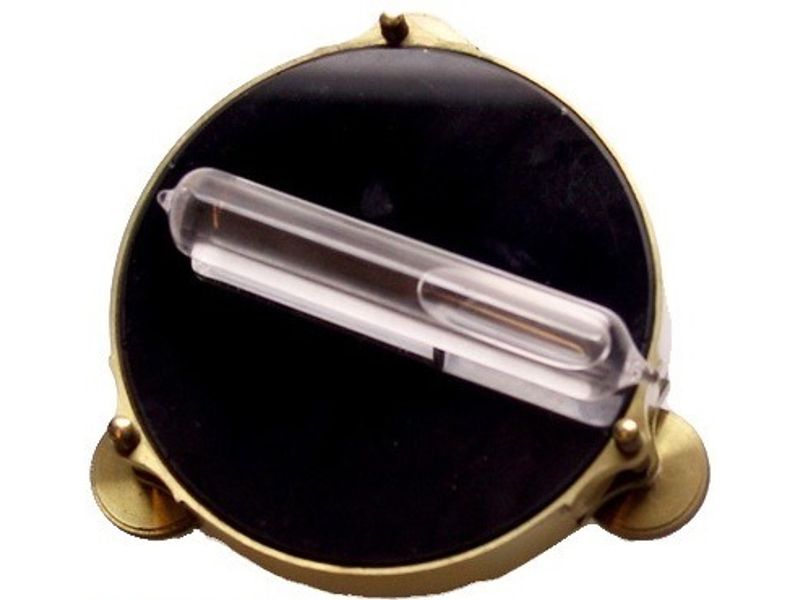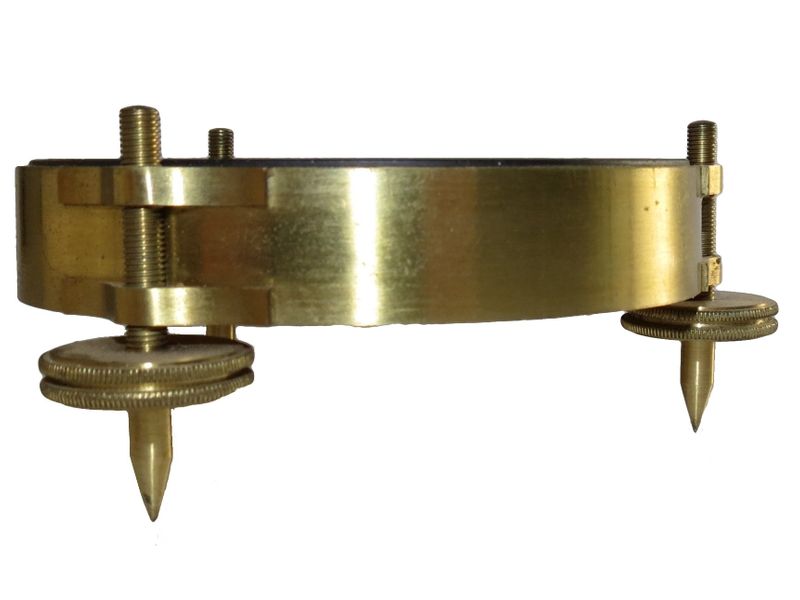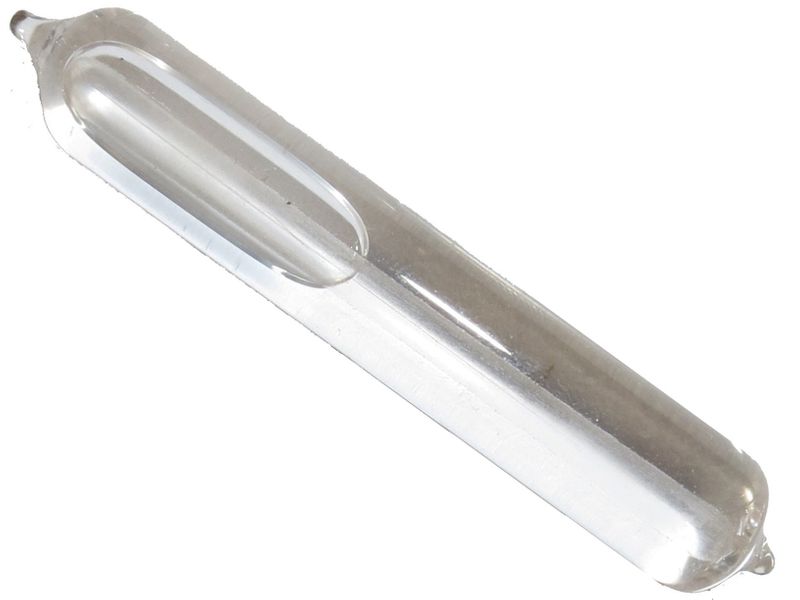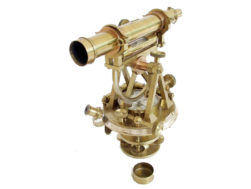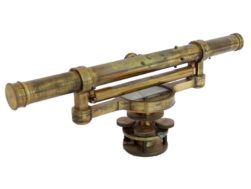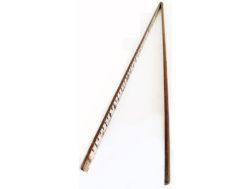Description
Circular black glass artificial horizon set in brass with three adjustable feet (c.1870). Separate glass bubble level.
Used in conjunction with a sextant to determine position by measuring the angle of altitude of celestial or worldly bodies.
An artificial horizon is used when the natural horizon in not visible as is often the case in land surveying. It is used in conjunction with a sextant to determine position by measuring the angle of altitude of celestial bodies. In the case of this particular artificial horizon the surface is glass – mercury placed in a small trough was also commonly used because it would settle to form a horizontal surface. However, where glass is used, the device has to be manually set on a horizontal plane and this is achieved by using a small bubble level and the adjustable feet.
For example, consider two parallel rays SA, S’B (see Image 5) coming from a distant object, and let S’B be reflected at B from the horizontal surface CD. BA (extended to R) appears to come from the image of the distant object formed by reflection at CD, and if an observer with a sextant at A determines the angle between the distant object and its image, he will measure the angle SAB. But since SA is parallel to S’B and the angle ABD is equal to S’BC, the angle SAB is twice the angle S’BC, that is, twice the altitude of the distant object. So, the angle is halved to determine the altitude of the object (subject to some corrections).

